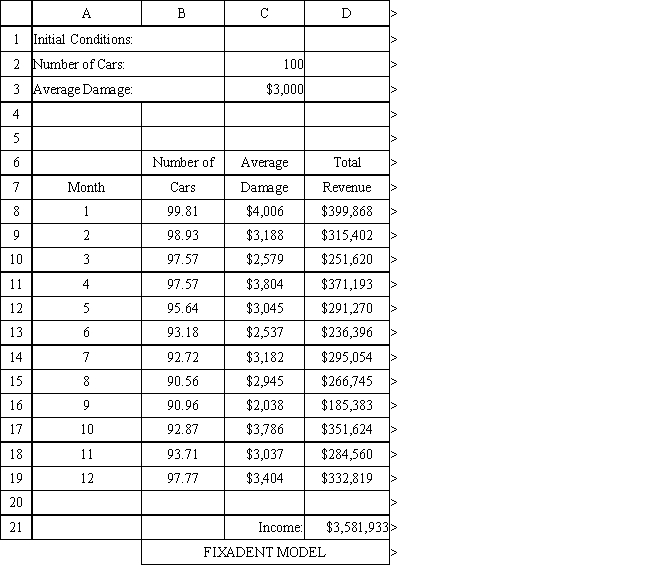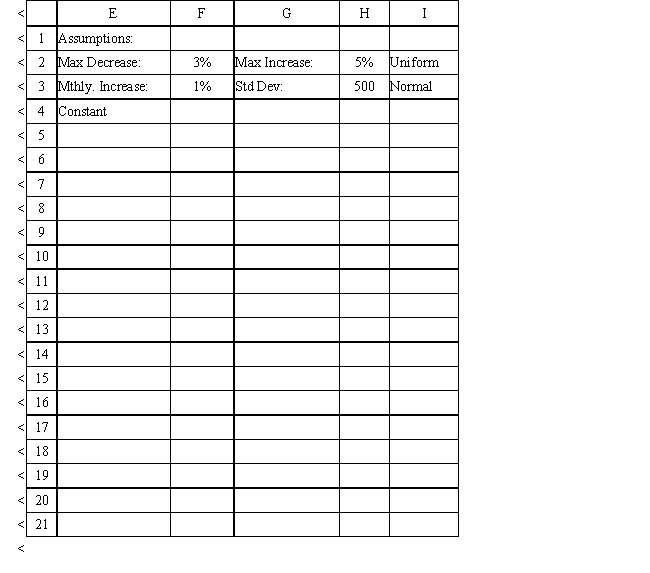Exhibit 12.1
The following questions use the information below.
The owner of Fix-a-dent Auto Repair wants to study the growth of his business using simulation. He is interested in simulating the number of damaged cars and the amount of damage to the cars each month. He currently repairs 100 cars per month and feels this can vary uniformly between a decrease of as much as 3% and an increase of up to 5% (average change of 1%) over the previous months. The dollar value of the damage to the cars is a normally distributed random variable with a mean of $3,000 and a standard deviation of $500. The average repair bill has been increasing steadily over the years and the owner expects the mean repair bill will increase by 1% per month. You have created the following spreadsheet to simulate the problem. 

-Using the information in Exhibit 12.1, what Analytic Solver Platform function should go in cell B8 to compute the number of cars repaired in the first month?
Definitions:
Purer Behaviorism
A form of behaviorism that focuses exclusively on observable and measurable behaviors, excluding internal states like thoughts and feelings.
Exchange Competition
A concept in economics and sociology referring to the rivalry among participants in a market to offer goods or services that are more attractive to consumers.
Specific Objectives
Goals or targets that are clearly defined and aimed to be achieved in a particular endeavor or study.
Network Theory
A theoretical approach that examines how networks of social, economic, or technological connections affect individuals and society.
Q12: Risk factors for slayings at work include
Q18: A residual is defined as the difference
Q21: The problem of finding the optimal values
Q35: According to clinical studies, most stalkers are
Q38: What is the probability that it will
Q40: Unlawful use of force against persons or
Q46: What is the correct formula to compute
Q72: In the Kendall notation M/D/4, D stands
Q86: Which of the following cannot be negative?<br>A)
Q90: Refer to Exhibit 14.13. What formula should